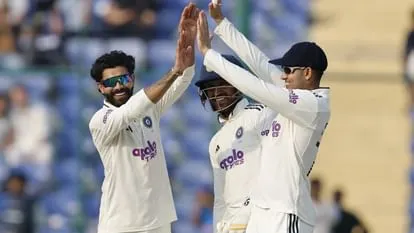
India achieved a historic milestone in their second Test against the West Indies, putting together 50-plus run partnerships for their first five wickets — a feat that had not been seen in Indian Test cricket for over 65 years. This remarkable display of batting dominance highlighted both the depth and consistency of India’s lineup, further cementing their position as one of the leading sides in the format.
The record-breaking innings was anchored by Yashasvi Jaiswal, who scored a commanding 175, and Shubman Gill, who remained unbeaten on 129. Their partnership set the tone for the innings, as both batters combined patience with aggression to keep the scoreboard ticking. Jaiswal’s fluent strokeplay and ability to rotate strike allowed Gill to play a captain’s innings, balancing risk with control. Their 50-plus partnership was the first in a sequence of successive collaborations that stunned cricket statisticians and fans alike.
Following the opening stand, Dhruv Jurel (44) and Nitish Kumar Reddy (43) continued the momentum, ensuring that the record streak extended through the middle order. Each subsequent wicket was followed by another 50-plus partnership, demonstrating remarkable resilience and teamwork. This sequence not only accumulated runs at a steady rate but also frustrated the West Indies bowlers, who struggled to find breakthroughs despite favorable conditions.
India’s achievement is particularly significant given the historical context. The last time such consistency across five wickets was recorded by an Indian side in Test cricket was in the late 1950s — an era dominated by limited cricketing resources and uncovered pitches. That record had stood untouched for more than six decades, underscoring the rarity of the feat in modern cricket. Analysts noted that India’s current batting depth, with talented players across the order, made this record possible, reflecting both skill and strategic application.
The declaration at 518 for 5 further highlighted India’s dominance. The team’s decision, led by Gill, allowed the bowlers to immediately press the advantage, with Ravindra Jadeja taking 3 for 37 to dismantle the West Indies’ top order. By combining a record-setting batting display with precise bowling, India controlled the narrative of the Test, placing themselves in a commanding position early in the match.
Beyond the numbers, the record reflects the evolution of Indian cricket. Modern coaching, analytical support, and mental conditioning have contributed to building partnerships that are both technically sound and mentally resilient. The ability to maintain focus across multiple wickets and partnerships speaks to the team’s preparation and the leadership of Gill, whose composure and tactical acumen guided the side to this historic achievement.
Cricket historians have praised the feat, noting that the sequence of 50-plus partnerships is as much a testament to individual brilliance as it is to collective effort. It reinforces India’s status as a team capable of producing record-breaking performances while simultaneously developing players who can handle pressure in high-stakes matches.
As the West Indies attempt to recover, India’s batting record will be remembered as a landmark in the nation’s cricketing history — a rare combination of consistency, skill, and strategic execution that has rewritten the record books after more than six decades.
12BET Shortlisted for Sportsbook Operator of the Year at SBC Awards 2025

